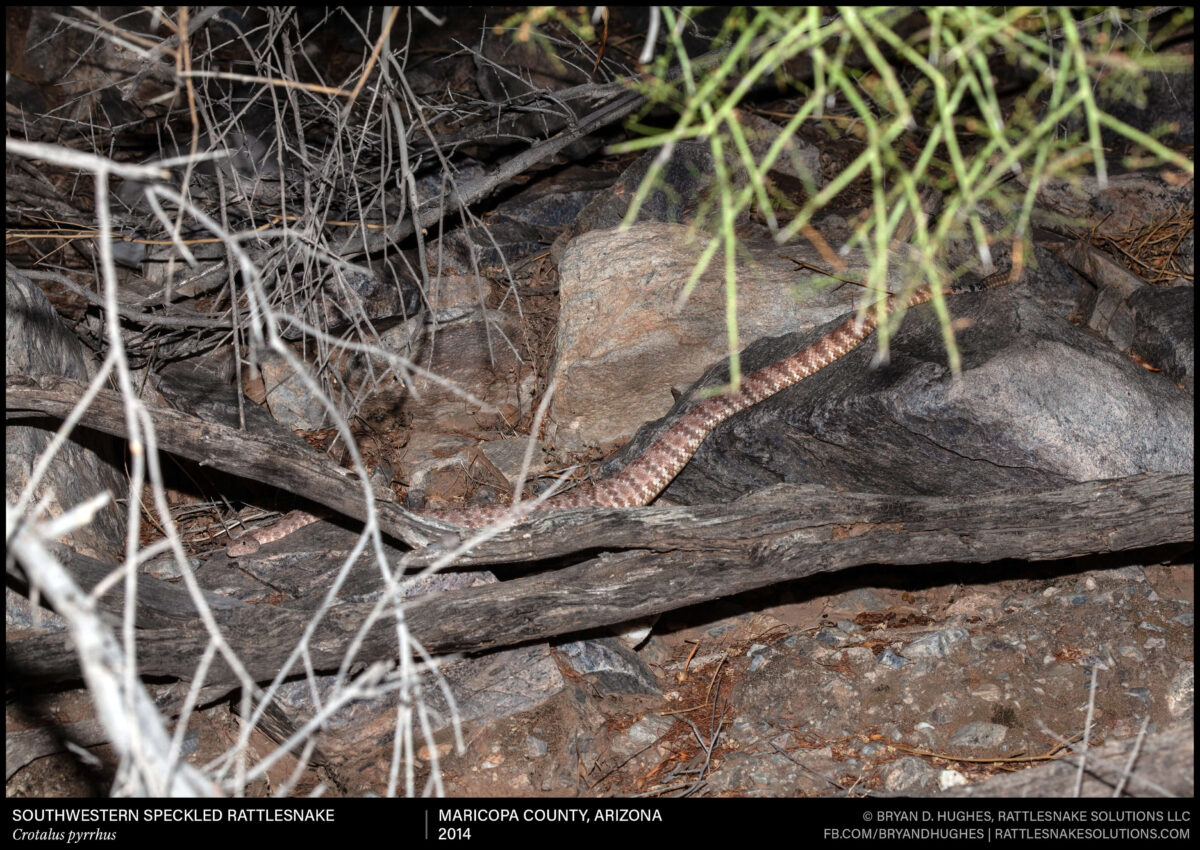A Southwestern Speckled Rattlesnake rests in a rocky retreat, waiting for dark. Like other rattlesnake species in the Phoenix area, once temperatures stabilize in the triple digits, their activity becomes mostly nocturnal. The late afternoon is a good time to wait for a lizard or bird to make a mistake, in the meantime.










